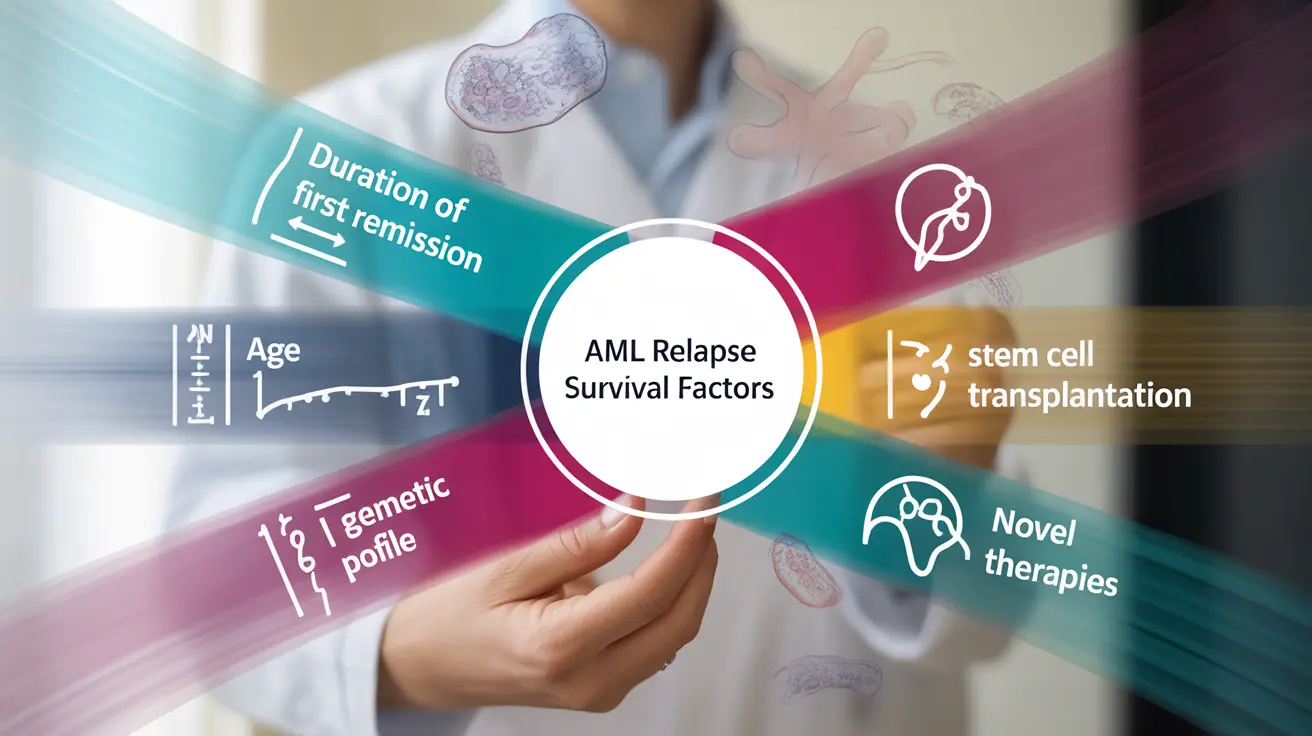Receiving news of an acute myeloid leukemia (AML) relapse can be overwhelming for patients and their families. Understanding the outlook, treatment options, and factors that influence survival can help in making informed decisions about care and next steps. This comprehensive guide explores what patients need to know about life expectancy and treatment possibilities after an AML relapse.
Understanding AML Relapse
AML relapse occurs when leukemia returns after a period of remission. This happens when some cancer cells survive initial treatment and begin multiplying again. The timing of relapse and various biological factors can significantly impact treatment approaches and survival outcomes.
Factors Affecting Survival After Relapse
Duration of First Remission
The length of the first remission is a crucial predictor of survival after relapse. Patients who maintain remission for longer periods typically have better outcomes when the disease returns.
Age and Overall Health
A patient's age and general health condition play vital roles in determining treatment options and potential outcomes. Younger patients and those with fewer comorbidities often have more treatment options available to them.
Genetic Profile
The genetic characteristics of leukemia cells significantly influence both treatment response and overall prognosis. Certain genetic mutations may make the disease more or less responsive to specific therapies.
Treatment Options for Relapsed AML
Stem Cell Transplantation
Allogeneic stem cell transplantation is often considered the most effective treatment option for eligible patients with relapsed AML. This procedure can offer the best chance for long-term survival, particularly in younger patients with good overall health.
Novel Therapies
Recent advances in treatment include targeted therapies, immunotherapies, and new combinations of existing drugs. These options may be particularly valuable for patients who cannot undergo stem cell transplantation or whose disease is resistant to conventional treatments.
Clinical Trials
Participation in clinical trials can provide access to cutting-edge treatments and potentially better outcomes. These studies are especially important for patients with limited standard treatment options.
Improving Outcomes
Regular Monitoring
Close medical supervision and regular monitoring help detect any signs of disease progression early, allowing for prompt intervention when necessary.
Support Systems
Access to comprehensive support services, including psychological support and symptom management, can significantly impact quality of life and treatment adherence.
Frequently Asked Questions
What is the typical life expectancy after an acute myeloid leukemia (AML) relapse?
Life expectancy varies significantly based on individual factors such as age, timing of relapse, and genetic characteristics of the disease. While some patients may achieve long-term survival with appropriate treatment, others may face more challenging outcomes.
How does stem cell transplantation affect survival chances in relapsed AML patients?
Stem cell transplantation can significantly improve survival chances in eligible patients, particularly those who are younger and healthier. This treatment option offers the potential for long-term remission or cure in some cases.
What treatment options are available for relapsed or refractory AML?
Treatment options include stem cell transplantation, novel targeted therapies, immunotherapy, clinical trials, and various combinations of conventional chemotherapy drugs, tailored to each patient's specific situation.
How do genetic mutations influence therapy and prognosis in relapsed AML?
Genetic mutations help determine which treatments are likely to be most effective and influence overall prognosis. Some mutations may make the disease more responsive to certain targeted therapies, while others might indicate a more challenging treatment course.
What factors affect the outlook and survival rate for people with relapsed AML?
Key factors include the duration of first remission, age, overall health status, genetic profile of the leukemia cells, availability of suitable treatment options, and access to specialized care centers.




